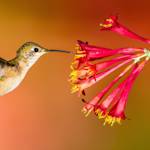Species Recovery, Bald Eagle
U.S.A.
“Before European settlers sailed to America's shores, there may have been 500,000 bald eagles on the continent.” Habitat destruction, illegal shooting, and contamination of its food source, largely a consequence of DDT, decimated the eagle population. By 1963, only 417 pairs were found in the lower 48 states. “In 1978 the bird was listed for protection under the Endangered Species Act. Since 1980, gentler treatment by humans along with the banning of DDT (the bird's main pesticide threat) have led to a dramatic resurgence. By the late 1990s, breeding populations of Bald Eagles could be found throughout most of North America. In June 2007, the bird's recovery prompted its removal from the Endangered Species list. Continuing threats to Bald Eagle populations include lead poisoning from ammunition in hunter-shot prey, collisions with motor vehicles and stationary structures, and development-related destruction of shoreline nesting, perching, roosting and foraging habitats. They are still vulnerable to environmental pollution, as evidenced by the 1989 Exxon Valdez oil spill in Prince William Sound, Alaska.”
“About Bald Eagles,” US Fish and Wildlife Service < http://www.fws.gov/refuges/birding/pdfs/10A\_BaldEagle.pdf >; “Bald Eagle,” Cornell Lab of Ornithology http://www.allaboutbirds.org/guide/Bald\_Eagle/lifehistory
"Bald eagle" Ron Peterson, 2009.


Learn about Maya Lin’s fifth and final memorial: a multi-platform science based artwork that presents an ecological history of our world - past, present, and future.

Discover ecological histories and stories of former abundance, loss, and recovery on the map of memory.

Learn how we can reduce our emissions and protect and restore species and habitats – around the world.

See how art can help us rethink the problems we face, and give us hope that each one of us can make a difference.

Help make a global memorial something personal and close to home. Share your stories of the natural world.


